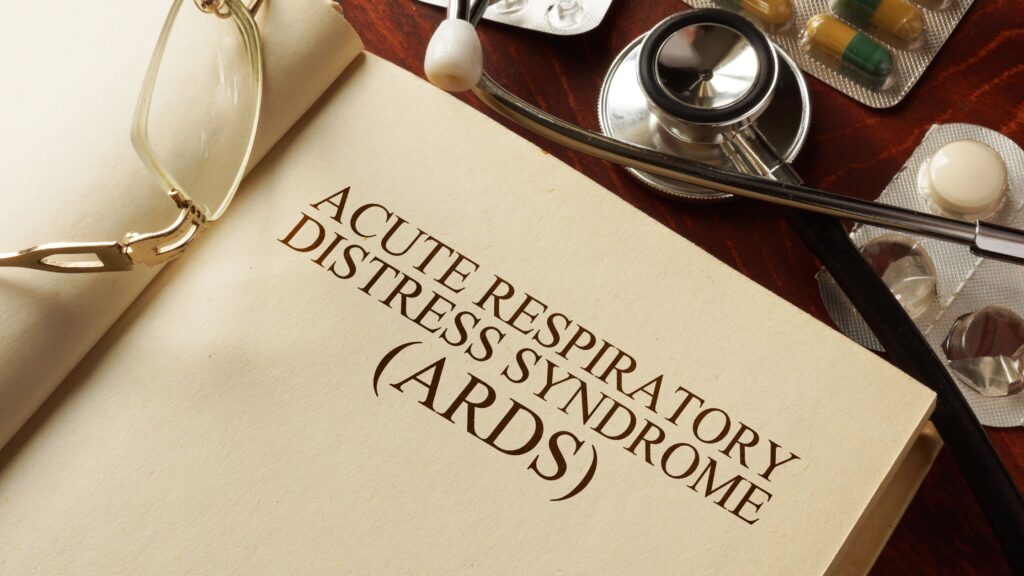
Acute Respiratory Distress Syndrome (ARDS) is a life-threatening lung condition characterized by sudden and severe inflammation of the lungs, leading to the accumulation of fluid in the tiny air sacs known as alveoli. This fluid buildup prevents the normal exchange of oxygen and carbon dioxide, making it extremely difficult for oxygen to reach the bloodstream and vital organs. Without prompt and appropriate treatment, ARDS can rapidly lead to multi-organ failure and death.
What Causes ARDS?
ARDS can result from direct or indirect injury to the lungs. Understanding the underlying cause is crucial for appropriate management and improving the chances of recovery.
1. Direct Lung Injury
Direct lung damage occurs when harmful substances or infections directly affect the lung tissues. Common causes include:
- Viral pneumonia, including COVID-19 infection
- Bacterial pneumonia
- Aspiration of gastric contents (inhaling food, vomit, or liquids into the lungs)
- Chest trauma (blunt or penetrating injury)
- Inhalation of toxic fumes or smoke
During the COVID-19 pandemic, a large proportion of critically ill patients developed ARDS, which was a leading cause of mortality. The virus severely inflames lung tissue, resulting in widespread alveolar damage.
2. Indirect Lung Injury
In some cases, ARDS is a result of systemic issues in the body that indirectly affect the lungs. These include:
- Sepsis (a severe, body-wide response to infection)
- Pancreatitis
- Severe burns
- Blood transfusion reactions
- Multiple fractures or trauma elsewhere in the body
These conditions trigger an inflammatory cascade that causes fluid leakage into the lungs and impairs oxygenation.
How ARDS Affects the Body
In ARDS, the lungs lose their ability to function normally because the alveoli, which are responsible for gas exchange, are filled with fluid. As a result:
- Oxygen from the environment cannot pass into the bloodstream
- Vital organs like the brain, heart, kidneys, and liver start receiving insufficient oxygen
- Multi-organ dysfunction and failure may develop if left untreated
Signs and Symptoms of ARDS
Patients with ARDS usually present with sudden and worsening shortness of breath. However, symptoms can vary depending on the underlying cause and the severity of lung involvement.
Common Symptoms Include:
- Rapid, shallow breathing
- Extreme shortness of breath even at rest
- Cyanosis (bluish discoloration of lips, nails, or skin)
- Low oxygen levels (SpO₂ below 95%)
- Fatigue or confusion
- Chest discomfort
- Symptoms of the underlying disease, such as fever or cough (in case of infection)
Diagnosis of ARDS
Diagnosis of ARDS is made using a combination of:
- Clinical examination
- Oxygen saturation measurement
- Chest X-ray or CT scan (to detect fluid-filled alveoli)
- Blood tests (to assess oxygen levels and infection markers)
- Arterial blood gas (ABG) analysis
Treatment of ARDS
The management of ARDS is multifactorial, focusing on improving oxygenation, reducing lung damage, and treating the underlying cause.
1. Optimizing Ventilation and Oxygenation
The first step in ARDS treatment is to support breathing and ensure adequate oxygen delivery to the body.
Methods of Oxygen Support:
- Nasal prongs or face masks for mild cases
- Non-Rebreathing masks for higher oxygen needs
- Non-Invasive Ventilation (NIV): A face mask connected to a ventilator delivers pressurized air without inserting a tube into the airway
- Invasive Mechanical Ventilation: In severe ARDS, a tube is placed into the patient’s windpipe (endotracheal intubation), and a ventilator takes over the work of breathing
Ventilator settings in ARDS are adjusted carefully by intensive care specialists or pulmonologists using lung-protective ventilation strategies to minimize further lung injury. The goal is to improve oxygenation while preventing complications like barotrauma or volutrauma.
2. Treating the Underlying Cause
The root cause of ARDS must be addressed for effective recovery. Depending on the cause, treatment may include:
- Antiviral medications (e.g., for influenza or COVID-19)
- Broad-spectrum or targeted antibiotics (for bacterial infections)
- Steroids or anti-inflammatory agents
- Fluids and vasopressors (in sepsis or shock)
- Nutritional support and monitoring of organ function
Advanced Treatment: ECMO (Extracorporeal Membrane Oxygenation)
In cases where conventional ventilation fails to maintain adequate oxygenation, ECMO may be considered. ECMO is a life-saving technology where blood is circulated outside the body through a machine that oxygenates it and removes carbon dioxide, allowing the lungs to rest and heal. It is used in:
- Severe ARDS not responsive to mechanical ventilation
- Lung transplant bridging
When Should You See a Pulmonologist?
Early intervention is key in preventing the worsening of ARDS. You should immediately consult a pulmonologist or visit the emergency department if you experience:
- Sudden and unexplained shortness of breath
- Oxygen saturation below 95%
- Rapid breathing and chest discomfort
- Persistent cough, fever, or fatigue with breathlessness
ARDS Recovery and Long-Term Outlook
Survival rates in ARDS have improved due to advancements in intensive care, but the condition still carries a high mortality rate, especially in elderly or immunocompromised individuals. Survivors may face long-term issues such as:
- Reduced lung function
- Muscle weakness
- Fatigue
- Cognitive or emotional difficulties (post-ICU syndrome)
Pulmonary rehabilitation and follow-up care are often required to help patients regain strength and improve quality of life after hospital discharge.